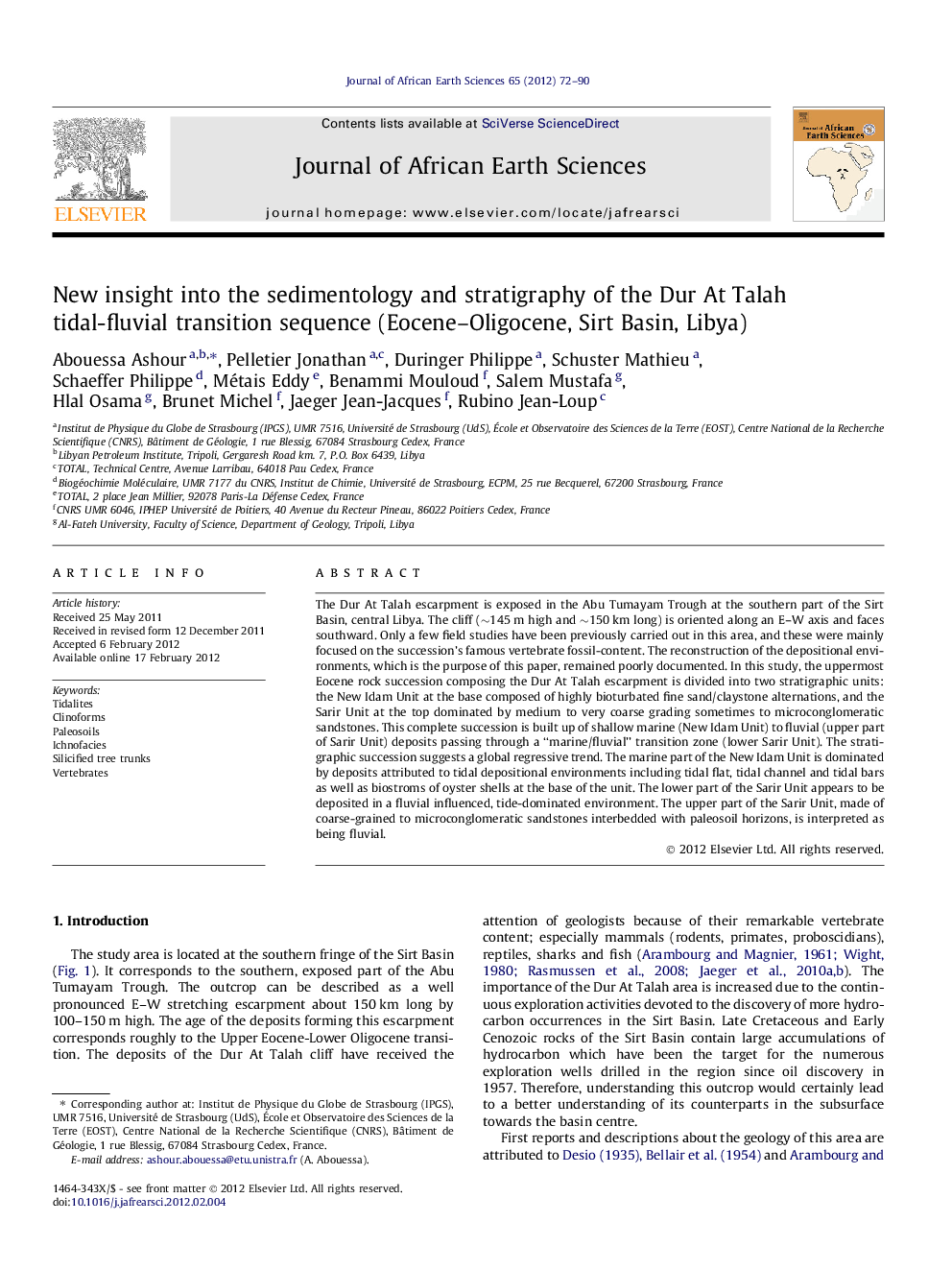| کد مقاله | کد نشریه | سال انتشار | مقاله انگلیسی | نسخه تمام متن |
|---|---|---|---|---|
| 4729115 | 1640238 | 2012 | 19 صفحه PDF | دانلود رایگان |

The Dur At Talah escarpment is exposed in the Abu Tumayam Trough at the southern part of the Sirt Basin, central Libya. The cliff (∼145 m high and ∼150 km long) is oriented along an E–W axis and faces southward. Only a few field studies have been previously carried out in this area, and these were mainly focused on the succession’s famous vertebrate fossil-content. The reconstruction of the depositional environments, which is the purpose of this paper, remained poorly documented. In this study, the uppermost Eocene rock succession composing the Dur At Talah escarpment is divided into two stratigraphic units: the New Idam Unit at the base composed of highly bioturbated fine sand/claystone alternations, and the Sarir Unit at the top dominated by medium to very coarse grading sometimes to microconglomeratic sandstones. This complete succession is built up of shallow marine (New Idam Unit) to fluvial (upper part of Sarir Unit) deposits passing through a “marine/fluvial” transition zone (lower Sarir Unit). The stratigraphic succession suggests a global regressive trend. The marine part of the New Idam Unit is dominated by deposits attributed to tidal depositional environments including tidal flat, tidal channel and tidal bars as well as biostroms of oyster shells at the base of the unit. The lower part of the Sarir Unit appears to be deposited in a fluvial influenced, tide-dominated environment. The upper part of the Sarir Unit, made of coarse-grained to microconglomeratic sandstones interbedded with paleosoil horizons, is interpreted as being fluvial.
► Tidal sedimentary structures are characteristic of the New Idam and Lower Sarir Unit.
► Clinoforms are common large scale sedimentary features in the New Idam Unit.
► Microconglomeratic sandstones occur only in the upper part of the Sarir Unit.
► Bioturbations are common throughout the New Idam Unit.
Journal: Journal of African Earth Sciences - Volume 65, 9 April 2012, Pages 72–90